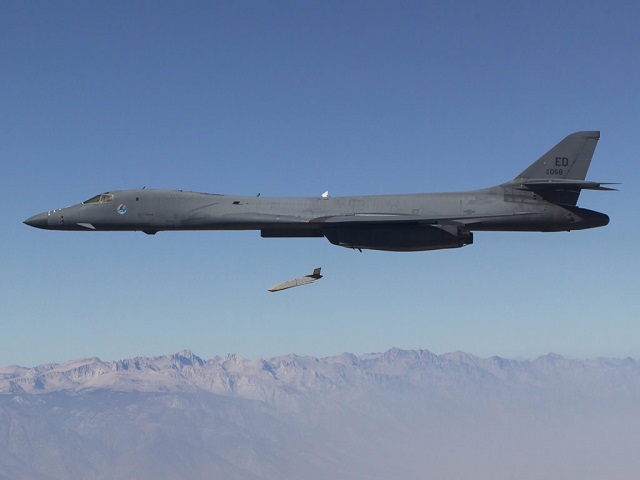Lockheed Martin has delivered the first set of Long Range Anti-Ship Missiles (LRASM) to the US Air Force, reaching Early Operational Capability for the weapon.
LRASM is a precision, anti-ship standoff missile based on the Joint Air-to-Surface Standoff Missile – Extended Range. As part of its Early Operational Capability, the missile was integrated on board the USAF’s Boeing B-1B bomber. The LRASM is scheduled to achieve Early Operational Capability on the US Navy's F/A-18E/F Super Hornet fleet in 2019.

LRASM being dropped from Boeing B-1B
USAF
LRASM is designed to detect and destroy specific targets within groups of ships using its sensors, encrypted communications and a digital anti-jamming GPS, according to Lockheed Martin. It is designed to be used in battle against the surface ships of advanced foes, such as China or Russia – adversaries who could disrupt and attack traditional means of targeting including intelligence, surveillance and reconnaissance platforms, network links and GPS navigation.
The missile can be armed with a 454.5kg (1,000lb) penetrating blast fragmentation warhead, according to Lockheed Martin. The LRASM is stealthy and is thought to have a range of greater than 500nm, based on the unclassified range of the Joint Air-to-Surface Standoff Missile – Extended Range. The long range capability of LRASM enables the B-1B to fire on targets from outside the range of direct counter-fire weapons.
LRASM was funded by a partnership between the USAF, USN and DARPA.
Source: FlightGlobal.com






















